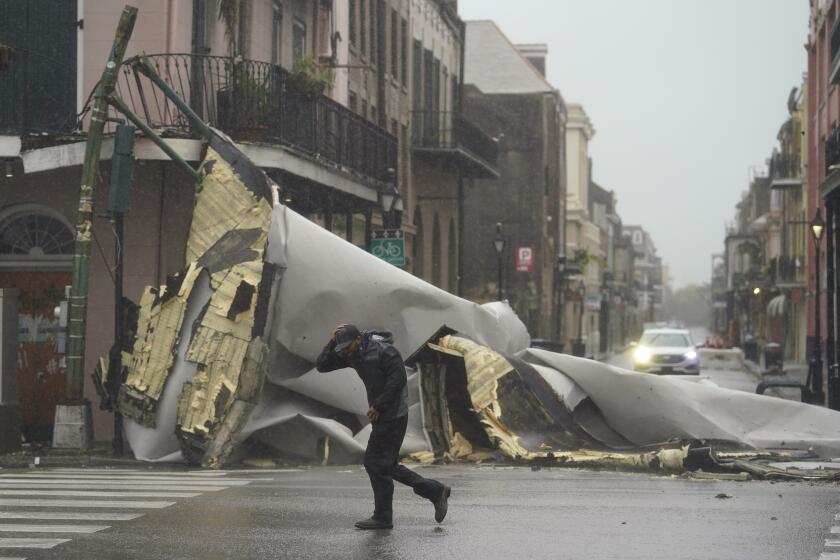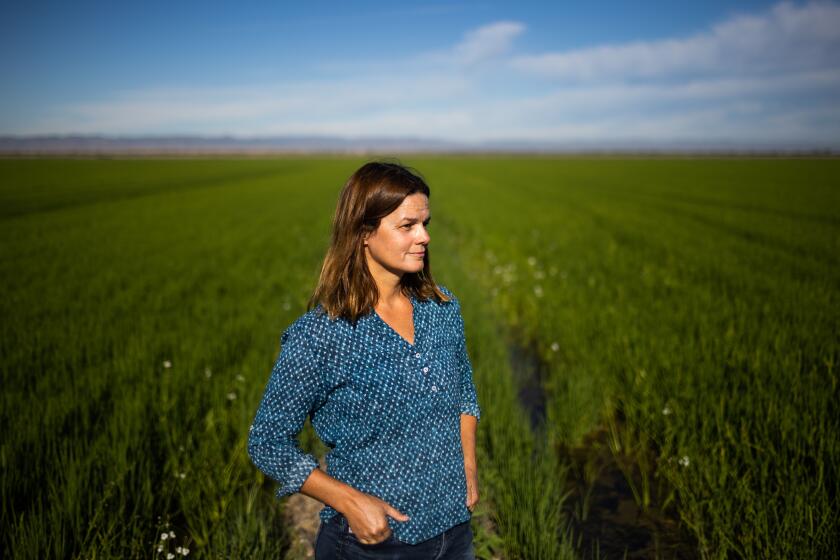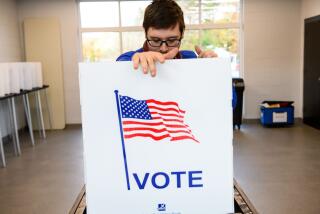COVID-19 looms over rescue efforts amid storm’s devastation
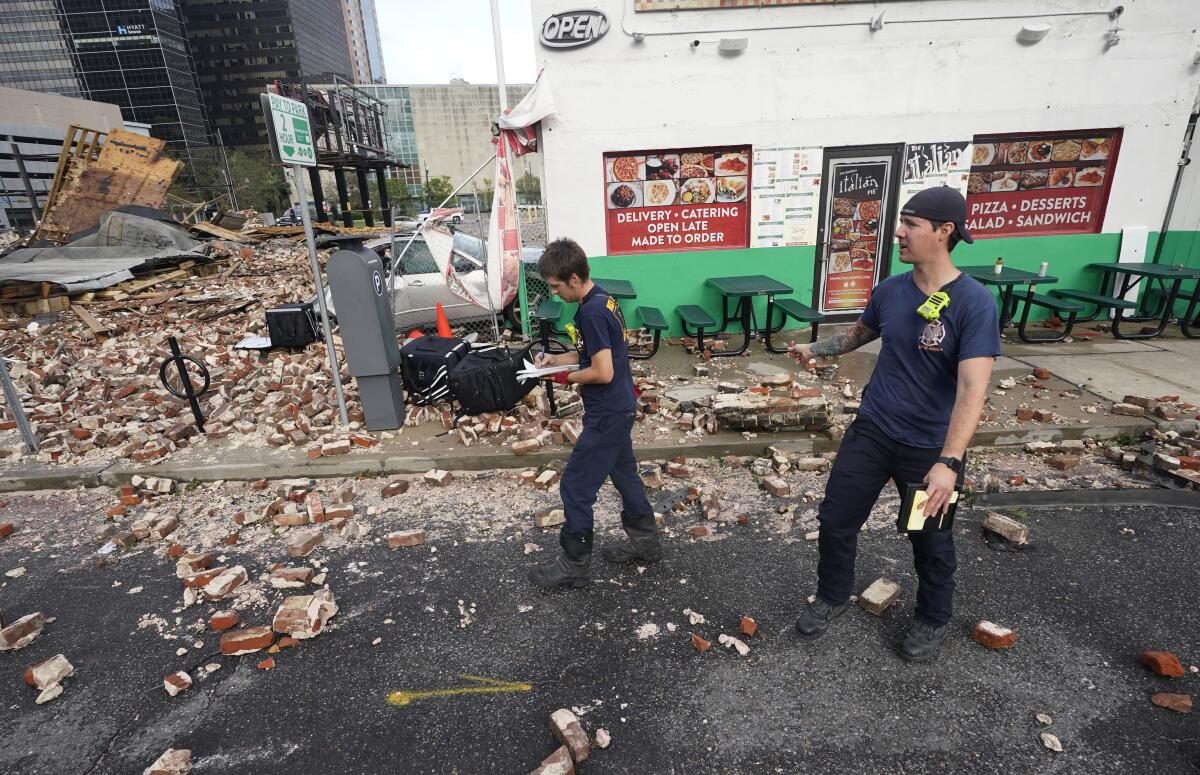
- Share via
LAPLACE, La. — Demetrice Joseph rushed to the door when she spotted a boat sailing through her subdivision toward her brick home in LaPlace, La.
The 47-year-old general manager of a truck stop had spent a long Sunday night searching for higher ground, from her bed to her kitchen counter, as flood waters from Hurricane Ida rushed through her front door.
She and her daughter had hoisted her mother, who has asthma and chronic obstructive pulmonary disease, onto the washing machine as the water rose past their hips. As the water receded, she struggled to sleep on a wet bed, worrying about her waterlogged car and home and anxious to get her mother hooked up to a breathing machine.
Hurricane Ida, hurricane, severe weather, New Orleans, Louisiana
But after rescuers transported her through streets littered with downed power lines and trees to the New Wine Christian Fellowship church — a staging ground for evacuees in this small city about 25 miles northwest of New Orleans — she worried about another, more invisible danger: COVID-19.
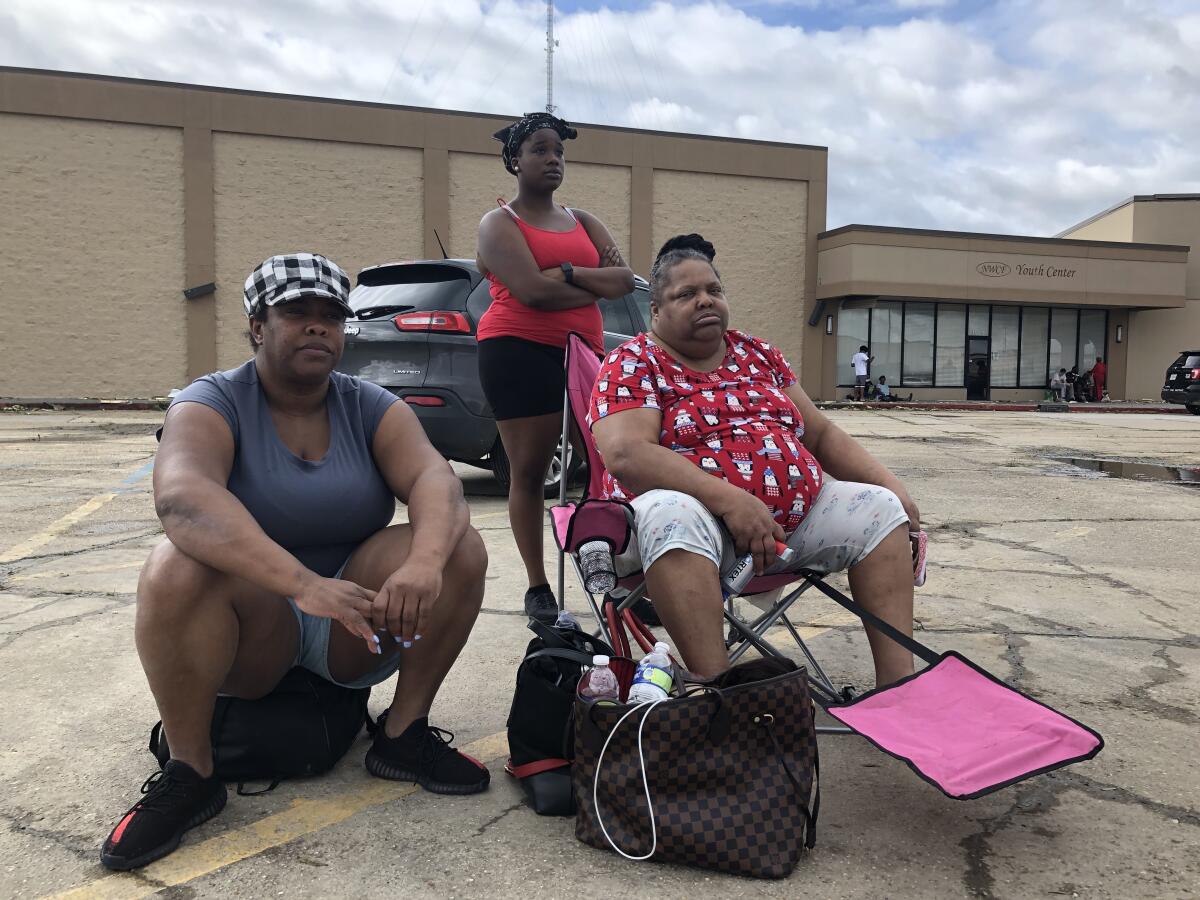
“We don’t want to catch it,” she said as she sat in the parking lot in the hot sun with her mother, daughter and niece, keeping their distance from the swelling crowd of evacuees, many of whom were not wearing masks.
Joseph, who is vaccinated against COVID-19, had not had time to grab a mask as she left her home and did not see any when she lined up at a desk to register and hand her ID to volunteers.
“My mom shouldn’t be around that many people,” she said.
Residents struggled to find refuge Monday after Ida, a Category 4 hurricane, pounded this fragile, low-lying stretch of southeast Louisiana with water and wind — flooding homes, tearing roofs off buildings and leaving hundreds of thousands without power — in a region already overwhelmed by a surge of COVID-19 cases.
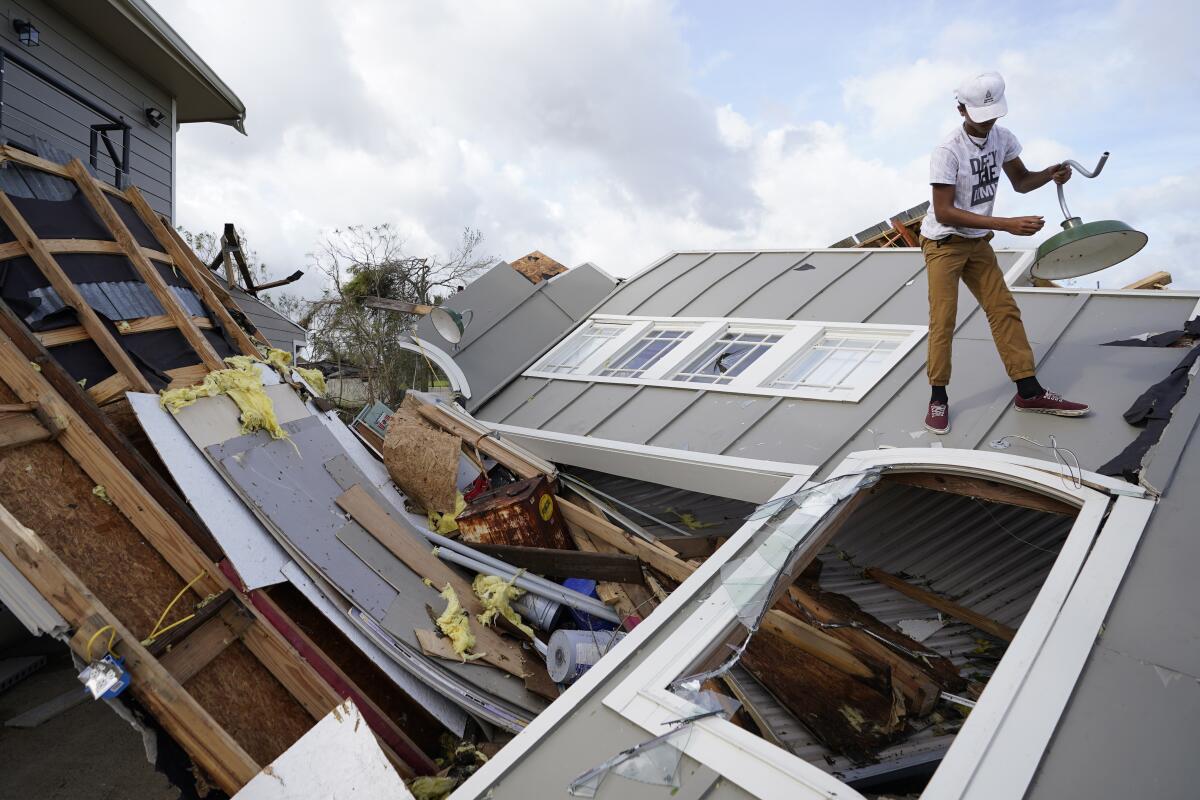
Hospitals across New Orleans and the rest of southeastern Louisiana were already close to capacity as the highly infectious Delta variant spread among a population with one of the nation’s lowest vaccination rates. Coronavirus-positive cases, hospitalizations and deaths soared in this Southern state throughout much of August, with average new daily cases surpassing 5,000 midmonth. The state has made some progress as cases have dropped over the last week, but they remain high, at about 4,000 per day.
As Ida wreaked havoc and destruction across Louisiana, the pandemic loomed over the disaster relief effort: Hospitals brimming with COVID-19 patients operated on generators, and some were forced to evacuate; shelters without power and water struggled to enforce social distancing, masking and sanitary conditions.
Still, in the immediate aftermath, Ida did not appear to take many lives. Two storm-related deaths were reported Monday: a motorist who drowned in New Orleans and a person hit by a falling tree outside Baton Rouge, La. Local coroners expect to report more deaths in the days to come due to the catastrophic damage to homes, Louisiana Gov. John Bel Edwards said during a briefing Monday afternoon.
Due to decades-old agreements with the federal government, some farmers are going relatively unscathed by emergency water cuts.
With power out for more than 1.1 million homes and businesses in southeastern Louisiana, officials were struggling to bring hospitals and dialysis centers back online first, Bel Edwards said. At least three hospitals had to evacuate patients due to storm damage, and a fourth was evacuating late Monday, he said.
“We really need our hospitals more than anything else to come back up so that people in ICUs can receive the lifesaving care they need,” he said — including COVID patients on ventilators. “It’s just too soon right now to say when that power is going to be restored. An awful lot of hospitals are on generator power.”
Bel Edwards said technicians were deployed to hospitals that were relying on generator power to ensure that backups were available in case of failure.
Almost 2,000 people were at three dozen shelters statewide, and many parishes were enforcing curfews Monday, Bel Edwards said, urging people to take precautions to guard against COVID-19.
“Whether we like it or not, we are still in a COVID environment; it is a very difficult COVID environment, where 100% of our cases are attributable to this Delta variant,” he said. “Everything we’re doing needs to be done with COVID in mind, so it’s important we mask and wash hands and do all of these things to the maximum extent possible.”
In LaPlace, many local officials and volunteers did not wear masks as they scrambled to coordinate disaster relief for residents.
“I’ll be honest with you: It’s life over limb; we really didn’t take too many COVID protocols,” Cain Dufrene, chief of operations for St. John the Baptist Parish Fire Services, said Monday in an interview at the command operation center.
Dufrene had worked through Sunday night, pulling a 30-hour shift as calls came in from people worried about loved ones trapped in waterlogged homes. Like many of the local officials and emergency workers huddled inside the St. John command center, he did not wear a mask.
“We’re going to save the life rather than trying to worry too much about the COVID stuff,” he said.
Toward a more sustainable California
Get Boiling Point, our newsletter exploring climate change, energy and the environment, and become part of the conversation — and the solution.
You may occasionally receive promotional content from the Los Angeles Times.
By mid-afternoon, Dufrene’s team of 35 firemen had worked with law enforcement officers, the National Guard, the Department of Wildlife and Fisheries and local groups to rescue more than 500 people in subdivisions and trailer parks across St. John Parish.
But local officials scrambled to process them. After water seeped through the doors of the local shelter, an elementary school, they relocated to New Wine Christian Fellowship, even though it too was damaged from the storm, with no power or water and missing several ceiling panels.
Rather than wait inside the dark church, many evacuees milled about in the parking lot as organizers tried to find chartered buses to transport them north.
“I just hope we stay safe and don’t catch COVID,” said Dontrell Riley, 25, who lives in the nearby town of Reserve, as she sat on the sidewalk with her four children, including a 2-month old.
“I seen a lot of people here, and I know it’s dangerous,” she said, nudging up her blue surgical mask to cover her nose.
Inside the church, the use of masks was not enforced. Two sheriff’s deputies sat behind a counter; one wore a face covering.
“Hey, am I supposed to wear a mask?” a middle-age man asked a monitor at the makeshift shelter.
“We got masks in here if you need,” the deputy said as the man walked in barefaced.
For many residents, COVID-19 was the least of their concerns.
As a ferocious hurricane bears down on South Florida, water managers desperately lower canals in anticipation of 4 feet of rain.
“It’s totally gone. We’ve lost everything,” said Everett Marshall, 60, a retired lieutenant from the Orleans Parish Sheriff’s Office, as he stood in the parking lot with his sick English mastiff, Queen, while his wife, Tomeka, registered his son and daughter. The family had retreated to the attic as the water got waist-deep inside their home.
He said he was not worried about contracting COVID-19, as he and his family are vaccinated. His most immediate concern was where his family would be bussed to and when cellphone service would resume, so he could contact his sister-in-law. He was also anxious to go back to his house to salvage what was left of their belongings.
“It’s like getting out of one situation and getting into another,” he said with a sigh.
Pandemic-related efforts in Louisiana and Mississippi had already been stymied by Ida. The Louisiana Department of Health closed its community-based testing and vaccination sites early Friday and has yet to announce when they will reopen.
In Mississippi, all testing and vaccination sites run by the state health department were closed Monday, and those in the southern and central counties that bore the brunt of the storm will remain closed Tuesday.
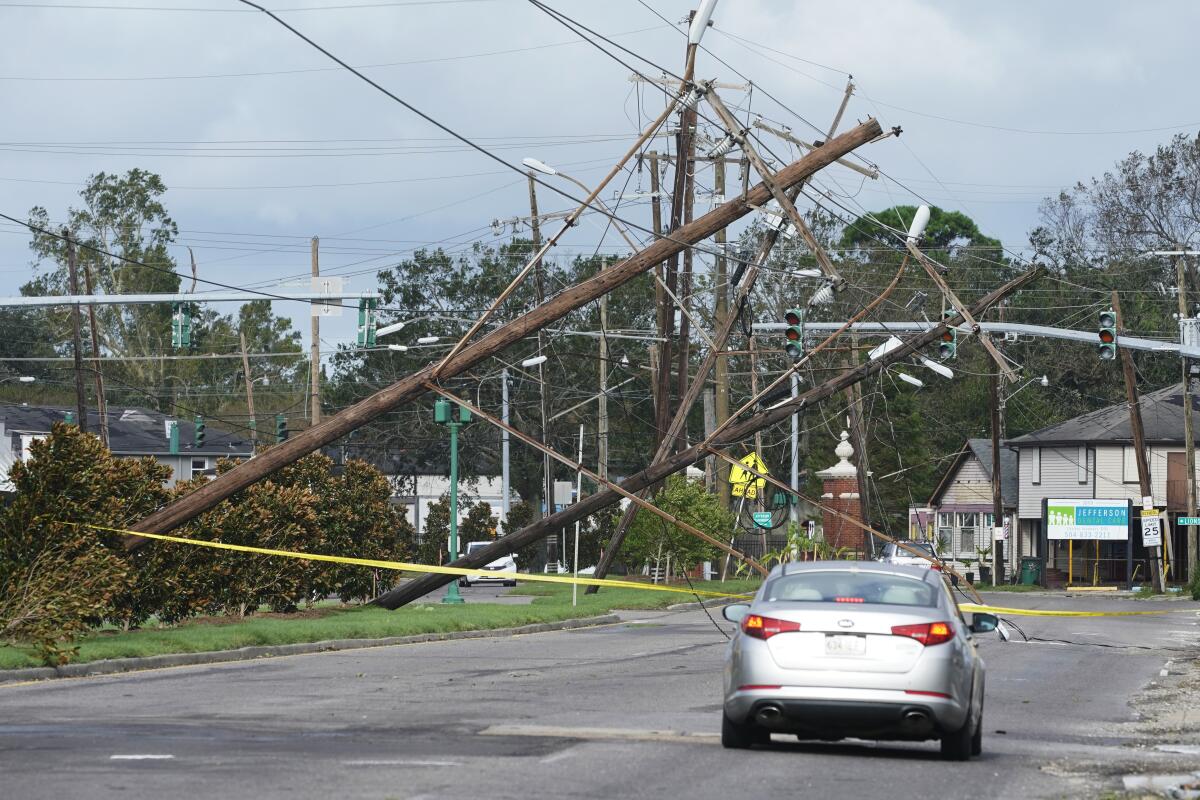
COVID-19 infections across Louisiana fell 20% in the past two weeks from their most recent peak, according to State Health Officer Dr. Joseph Kanter. He attributed the decrease, at least in part, to the governor imposing a mask mandate.
“It gave us a little breathing room going into the storm,” Kanter said. But, he added, “with hospital capacity so tight, even with that 20% reduction, we’re still higher than at any point prior to this surge.”
Absorbing patients after the storm was difficult for the state’s hospitals, which are treating more than 2,400 COVID patients, he said.
“We have confidence they will be OK,” Kanter said. “They’re all at or near patient capacity, but that was the case before the storm, just due to COVID.”
After waiting a few hours Monday morning outside New Wine Christian Fellowship with a growing crowd of evacuees, Joseph grew increasingly concerned about her mother, who was having trouble breathing and had low oxygen levels.
Joseph flagged down a sheriff, who called an ambulance that transported her mother to the local emergency hospital.
“She’s got a better chance there than she does here,” Joseph said as she waited for a bus to whisk her, her daughter and her niece to an unknown location up north.
Times staff writer Molly Hennessy-Fiske contributed to this report from Houston.
More to Read
Sign up for Essential California
The most important California stories and recommendations in your inbox every morning.
You may occasionally receive promotional content from the Los Angeles Times.
